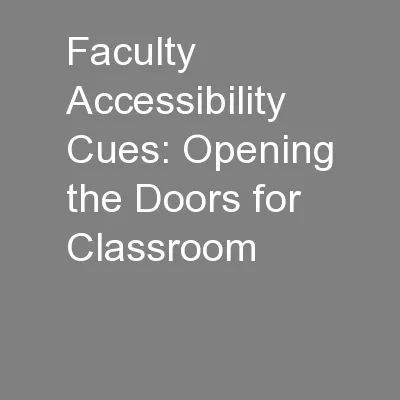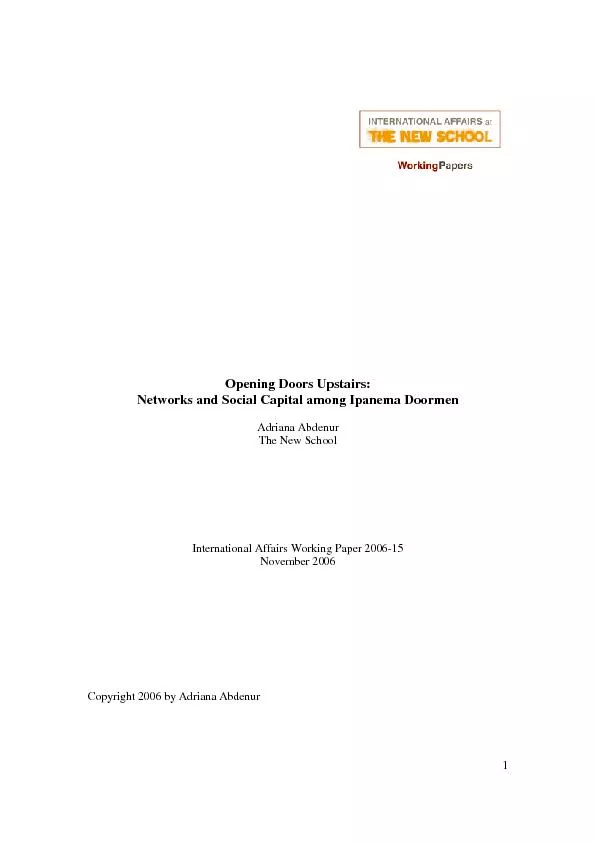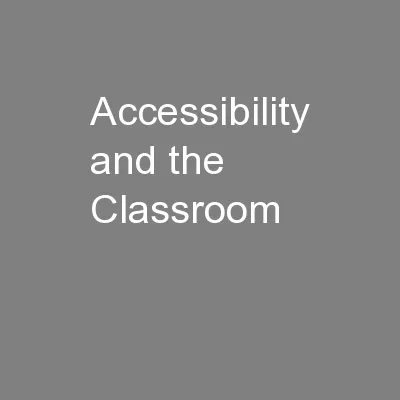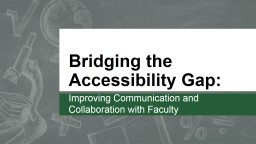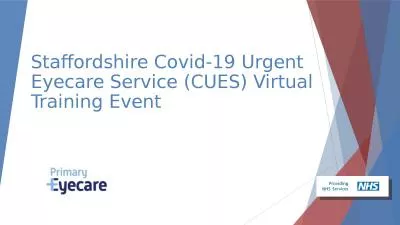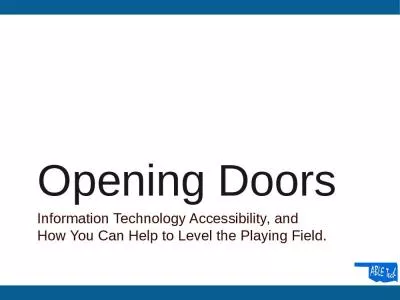PPT-Faculty Accessibility Cues: Opening the Doors for Classroom
Author : yoshiko-marsland | Published Date : 2016-05-16
Kevin Eagan Tanya Figueroa Sylvia Hurtado Josephine Gasiewski AIR Annual Forum New Orleans LA June 6 2012 Background Importance of studentfaculty interaction
Presentation Embed Code
Download Presentation
Download Presentation The PPT/PDF document "Faculty Accessibility Cues: Opening the ..." is the property of its rightful owner. Permission is granted to download and print the materials on this website for personal, non-commercial use only, and to display it on your personal computer provided you do not modify the materials and that you retain all copyright notices contained in the materials. By downloading content from our website, you accept the terms of this agreement.
Faculty Accessibility Cues: Opening the Doors for Classroom: Transcript
Download Rules Of Document
"Faculty Accessibility Cues: Opening the Doors for Classroom"The content belongs to its owner. You may download and print it for personal use, without modification, and keep all copyright notices. By downloading, you agree to these terms.
Related Documents

